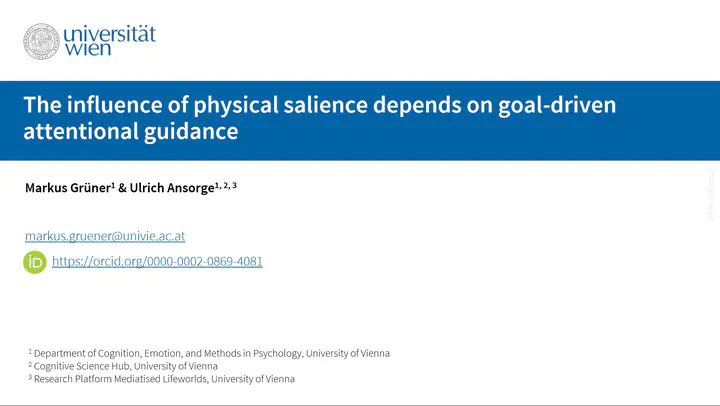
Abstract
Physical salience and search goals are the main factors guiding attention during visual search. However, salience alone is typically not sufficient to capture attention. For example, if cues do not match the current searched-for target feature, they do not capture attention despite being salient. However, it has recently been argued that the usually used nonmatching cues are just not salient enough to capture attention, and more salient cues would capture attention even if they do not match the searched-for feature. We investigated this claim by varying the physical salience of matching and nonmatching cues in a contingent capture protocol. Participants searched for a target color amongst four colored stimuli (feature search), while a singleton cue with a target-matching or nonmatching color preceded the target at the same position (valid trials) or a different position (invalid trials). Here, slower reaction times in invalid trials compared to valid trials (i.e., the validity effect) would indicate attentional capture by the cue. To vary the cue’s salience (low vs. high), we presented the cue block-wise amongst three or seven color homogeneous nonsingleton stimuli. Nonmatching cues did not elicit significant validity effects, regardless of their salience. In contrast, matching cues elicited significant validity effects that were stronger for highly than lowly salient cues. The results showed that nonmatching cues do not capture attention even if they are highly salient. However, the physical salience of matching cues influenced attentional capture, showing that bottom-up salience’s influence depends on top-down guidance.